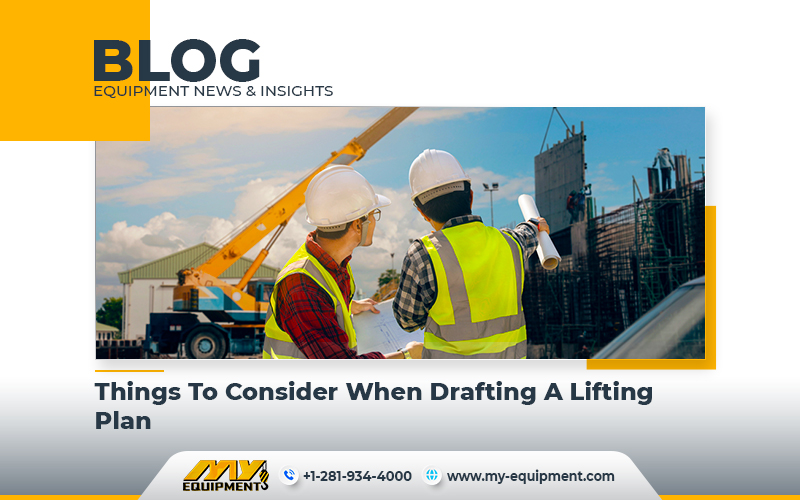When operating heavy machinery safety should be everyone’s top priority however, accidents on worksites are still quite common due to negligence. If you are going to operate a mobile crane or any other heavy equipment you need to make sure to plan and prepare every step carefully. Lifting operations can be quite dangerous as they involve heavy loads and huge equipment. The lives of everyone present on site during these lifting operations are at risk, so the lifting supervisors need to make sure that they draft a clear and detailed lifting plan.
All crane lifting operations include a lift plan which describes in detail the procedure of the lift. Usually, the lifting supervisors have enough expertise and relevant knowledge to be able to draft a plan. The following are a few things that the supervisor needs to consider when drafting a lifting plan.
Weight of the Load
Before you start lifting you need to determine the total weight of the load that needs to be lifted. Make sure that you have this figured out in the early planning stages of the lift as it affects other components such as the equipment that is being used for the lift or the type of lifting slings or rigging hardware that would be required. Remember to include every piece of lifting gear that would be involved in the lift when you are calculating the total weight of the load. If it turns out that the load is critical and exceeds 90% of the crane’s capacity you will need a detailed rigging plan along with supporting calculations that would need to be reviewed and accepted before you can start the process.
Risk Assessment
During a lifting operation it is necessary for the employers to assess the health and safety risks that the workers are facing and ensure that they are at an acceptable level. It is important to closely monitor the entire process and identify any potential hazards. Make sure that the lifting equipment being used for the job has sufficient lifting capacity and was properly being maintained.
Apart from the equipment you should assess the ground conditions to determine whether or not they allow the safe set up and operation of lift equipment. Even if you find the best used lift truck for sale it would not be able to make up for poor ground conditions. So, make sure to look for any potential hazards and gauge the severity of their effect. Once you do that figuring out how to reduce those risks would be a lot easier.
Height Restrictions
It is quite common for lifting operations to encounter height restrictions. The limitation on head height may be in place because the crane lacks the capacity to operate with the increased boom length. In such circumstances the engineer should take other configuration options into consideration in order to be able to work around height restrictions. These are a few of the things that you should consider when drafting a lifting plan.


 1400 Broadfield Blvd, Houston, TX 77084,
USA.
1400 Broadfield Blvd, Houston, TX 77084,
USA. omer@my-equipment.com
omer@my-equipment.com